“Leave your work, your worries behind, let down your hair and be free… ”
Most people who come to dive in the Sipadan area stay on nearby Mabul Island and their diving experience is a combination of the 2 islands – macro sites and critters, deep walls and big fish action.
Pulau Mabul (as it is known locally) is a small sandy island with coconut trees, a local fishing village, and of course dive resorts. It is only 25 minutes or so boat ride from Sipadan Island itself. It has long lived in the shadow of its famous neighbour but is now emerging as a dive destination in its own right.
As critter-diving has increased in popularity many divers come here, not only for the big fish action of Sipadan, but for the incredible array of macro-life to be seen at Mabul Island. Sandy sea-beds, coral outcrops, small walls and artificial reefs and jetties, are all home to some of the seas most amazing little creatures.
It is often a good sign when underwater photographers are around and there are always a few scuba diving here at Mabul (often they are only here for the macro sights, and not at Sipadan!), so you can be sure that there are a wealth of interesting marine creatures lurking in every nook and cranny around the island.


Dive Site Descriptions
The Artificial Reef – Situated directly in front of SMART Resort on the south side of Mabul Island, the artificial reef is constructed from wooden frames, man-made structures in the shape of pyramids, crates and rockpiles. It attracts many different types of marine life. What looks at first sight to be only a bunch of boring old junk turns out to be a habitat for an astonishing array of creatures.
Crocodile Avenue – Opinion is divided on the quality of this site. For high adrenaline-junky divers, Mabul Island may seem a little sedate, but for macro-lovers it is a haven of discovery. As with many of the dive sites here, progress should be slow and deliberate with eyes scanning the floor and every feature on it for sightings that you will miss if you fin off looking straight ahead.
Eel Garden – Scuba diving at Mabul offers rich rewards for those who are patient and willing to move slowly but surely in search of rare species that are hard to find at other dive destinations. On the sandy seabed which you can find at a depth of about 20 metres onwards, you’ll spot loads of small lairs and tunnels. These are home to shy colourful gobies of various species, blue ribbon eels swaying around with gaping mouths and cleaning shrimp who might conduct a little dental work for you if you ask nicely.
Froggy Lair – As with many of the sites around Mabul Island a keen pair of eyes and deliberate approach are necessary here if you are not to emerge saying you saw nothing. Suspended particles in the water can make for what would normally be considered poor visibility. The point is this should not matter, as you won’t be staring off in the distance looking for passing sharks, rather you should be seeking out delights closer to your mask. That explains why there are mixed reviews for this dive site.
Lobster Wall – Lobster Wall near Mabul is a slope running down to about 20m depth. The dive site consists of a colourful reef covered with various species of nudibranchs, and several different types of pipefish. To begin the dive you will likely start off on top of the reef, working your way down gently along the sloping wall. The wall is full of holes and a network of tunnels behind the main wall of the reef. Lobsters can sometimes be spotted at the entrances to these small caverns.
Ray Point (a.k.a. Stingray City) – Accessed by boat from Mabul Island, you will roll into the water right above the reef and, having descended from the surface, gently wander down the slope.
Seaventure Platform – Is beauty only skin deep or is that just something that ugly people say? People see this converted oil rig and are aghast at the thought of diving beneath it. Ugly, big metal legs support what is now converted into accommodation but it looks like the last place you would think about diving beneath. Underwater however, is a very different story.

Staying in a resort on the island means that on days when you are not diving Sipadan, you can concentrate on all the local sites around Mabul where the critters abound. There are several resorts on the island that should have something for everyone, from a budget resort to stilted bungalow luxury. Special local rates apply at many of these resorts for Malaysians, Singaporeans and expatriates living in those countries with work permits.
There is also one liveaboard in the area which stays overnight at Mabul Island and from which you can dive many of the local sites.

Depth: 5 – 20m
Visibility: 5 – 15m
Currents: Gentle
Surface conditions: Calm
Water temperature: 27 – 29°C
Experience level: Beginner – advanced
Number of dive sites: 12
Distance: 12 km (25 minutes) north from Sipadan and 5 km west of Kapalai
Recommended length of stay: 5 – 14 days
Source: http://www.dive-the-world.com/diving-sites-malaysia-mabul-island.php
I recently had the experience of a lifetime. An experience that moved me to tears – and one that made me feel so incredibly content about life. This website is in remembrance of that journey – I am looking to ensure notability so that I never forget how happy I feel at this moment in time.
Having friends in Hong Kong allowed me to plan a tour of Asia, using the Chinese province as a base. I visited numerous countries on this tour; Brunei, Macau, Singapore and of course Hong Kong. However, a dream was fulfilled when I visited the remote island of Pulau Tiga in Malaysian Borneo.

Pulau Tiga has been at the top of my list of places to visit ever since 2001 when I watched the first season of Survivor UK. I was instantly captivated by this stunning but dangerous island in the middle of the South China Sea. In later life, I discovered the US version of the show, the first season of which was also set on Pulau Tiga. At that point, I became a Survivor superfan.
I am so emotionally and spiritually connected to the Survivor concept, and this island. Perhaps this all sounds very silly as it is just a television show – but the show actually helped me through some really tough times. Growing up, I didn’t have a normal childhood; I had abusive parents, suffered regular beatings and had to fend for myself from the age of four. No child should have to endure that. One of the key factors that allowed me to keep my mental sanity was this brilliant Survivor concept, with a key principle of the show being that there is always hope if you keep fighting. I did, and I escaped the terrors of my childhood.
_____________________________________________________________________________________________________________
I love virtually everything about the show Survivor, particularly the two seasons (UK and US) set on Pulau Tiga. Every single aspect was superb from the casting, to the soundtracks, to the challenges – utter brilliance. Put simply, I have a complete and unadulterated love affair with this show. I feel honoured and humbled to have had the chance to explore this mysterious island and replicate some of the experiences that the castaways also had. I need to thank Pulau Tiga Resort for that, and in particular my guide Julius who made these opportunities possible. Some of these experiences included making fire and cooking on the beach, visiting the sand spit (seen above on the left) where numerous challenges were set, and seeing the numerous props left behind on the island by the production team. I was also able to play the final episode of Survivor US on my laptop, whilst sitting in exactly the same spot where Richard Hatch sat at tribal council when he found out he was the sole Survivor; “the winner of the first Survivor competition is .. Rich” .. that moment gave me goosebumps.
There’s an interesting story behind that Helang tribe chest. It was left behind by the production team, just like all the other props. This chest was originally used as part of an immunity challenge, but what was particularly compelling is that this chest was locked when I saw it. As it turns out, the chest had been locked since the series was filmed – that’s 16 years!! The chest did rattle, so something was clearly inside. We decided to open it. Sadly, nothing hugely exciting awaited to fulfil our curiosity, just some old bulb torches and batteries, as well as some degrading plastic bags. However, the anticipation of what could have been inside was exciting. My imagination was running wild at the time!
What ultimately convinced me to take the trip to Pulau Tiga was reading Justin Walter’s blog about when he made the journey. Justin was able to get a picture at Bird Island, where the famous “one survivor” shot was filmed for the opening credits, and I wanted one too. The “one survivor” shot is a key component of the opening credits for every single season – and to me, this shot depicts what the game of Survivor is truly about; fire representing life, being in an isolated area, and having to endure the experience with no-one to trust, against the elements, and against your fellow castaways. Each new season one of the aspects I look forward to most is the opening credits for this very reason; and the opportunity to get my own shot on Bird Island was just too good to turn down.
In order to get the perfect shot, you really need optimal weather conditions, and sadly the cloud cover was just too much on that day. However, I am still extremely happy with the result and do plan to go back in the next five years to have another try.
My second trip to bird island was on my final morning. I just couldn’t leave without saying goodbye. That tiny rock, surrounded by the South China Sea, is my favourite place on Earth, and I wanted to take some time alone there to just contemplate life and appreciate the location I was in; being there really was a dream come true. Sitting on bird island and feeling like the only person in the World was an extremely momentous occasion in my life, and I’m not ashamed to say it brought me to tears. It’s the only time that I have ever felt such a strong spiritual connection to anything at all, and I absolutely loved it.
This experience got me thinking, Bird Island isn’t easily accessible at all – first you need to get to Pulau Tiga itself (already remote!) and then climb onto the isolated rock – which is challenging. Based on this I would confidently say that less than 50 people have stood up there in the history of the World; and now, I’m one of those few. A breathtaking moment.
I do feel like the island of Pulau Tiga is somewhat under-appreciated with so little online notability. I plan to write some articles in the future to improve this; some things I am initially thinking are working out the number of people who have been up Bird Island (already started investigating), understanding the intricacies behind the perfect one survivor shot, and getting to grips with some of the mysteries of the island.
Speaking of mysteries of the island .. I’ll leave you with three surprising and relatively unknown facts I discovered about Survivor whilst on Pulau Tiga:
– At one of the challenges on the sand spit in Survivor US, Gervase Peterson ended up travelling back to the main Pulau Tiga island via boat with no other castaways on board. Whilst on the boat he sneakily ate some of the food for the crew and resort staff. He asked the staff to not tell the production team, and they didn’t. As far as I can tell, the producers of the show still don’t know this story.
– During the first episode of both the UK and US versions, the tribes were dropped off on a raft near Pulau Tiga, and they had to paddle onto the island. The show lets the viewer know how long this paddling took. However, what they didn’t tell you is that all four tribes (Pagong & Tagi – US, Helang & Ular – UK) had to be pulled a lot of the way by boat, due to the strong current of the water.
– The Matahari, the boat that carried all the castaways near the island before the marooning on both the UK and US versions of the show, unfortunately no longer exists. The boat eventually sank, probably due to degradation over time.
SDC Mabul, have been appointed as the representative for National Dive League (NDL) in Sabah and a 5 Star Premium Dive Club. We are proud the be associated with NDL as we are now able to provide an additional dive education option for all dive students in their love for the sea and the continue education on diving to allow this profession to be enjoyed by more divers.
Below is a short introduction to NDL,
National Dive League (NDL) http://www.ndl-global.com/ – an organization that has developed a large number of unique programs for the training of scuba divers (divers) and freedivers
National Dive League has an extensive system of diving clubs and diving schools, and conducting training scuba diving and freediving in Russia, Egypt, Thailand, Vietnam, Malaysia and other resorts in the world with subsequent certification.
Diving today is common type of active tourism, which anyone can do.
Safety of modern diving and freediving is now at such high level, because training in clubs and schools NDL conducted according to international standards ISO and EN.
By specialists of the National Dive League were developed many courses of diving and freediving, both for amateurs and for professionals, which together constitute a system of training NDL.
The systematic approach in teaching diving is:
Certification card sample for Novice and professional divers
Contact us for more information and dive education package price at www.sdclodges.com , call +6088 240584 or email [email protected]
Proboscis Lodge Bukit Melapi is proud to support and to be associated with the Biodiversity Awareness Program and ‘Plant Trees, Save The Earth’ which was launch at the lodge on the 7th December 2016

Ambassador and Head of the European Union (EU) delegation, Her Excellency Maria Castillo Fernandez was the guest of honour and the event was witnessed by Christiaan Louis, Jerome Pons (Head of Cooperation), Ralf Ludwig (Team Leader EU Programme), Dr. Raymond Alfred (Kinabatangan REDD+ Project Manager), Rosila Anthony (REDD+ CORE Project Coordinator), Peter Malim (REDD+ Kinabatangan Project Coordinator), Hussin Tukiman (Kinabatangan Forest officer) and Zulkefli Haji Said (FGV).

She said this when launching the Felda Global Venture (FGV) – Borneo Conservation Trust (BCT) – Sabah Wildlife Department (SWD) Biodiversity Awareness Programme and the “Plant Trees, Save the Earth” campaign at the Proboscis Lodge Bukit Melapi recently.
The collaboration has received the support of the Proboscis Lodge Bukit Melapi and Myne Resort. The two resorts have allocated their land (combined area of at least 200 acres) as wildlife corridors while also carrying out tree planting activities.
REDD+ Kinabatangan Project Manager, Dr Raymond Alfred explained that the modules for the programme was similar with the Environmental Conservation & Sustainability Certificate Programme.
He said that the programme comprised of four-days of lecture and 10 days of field trip.
The lectures will include subject on Scenarios for a Sustainable World, Sustainable Agricultural Practices, Climate Change and Biodiversity, and introduction to Spatial Mapping. He also stressed that the key stakeholders that need to be involved for the successful implementation of conservation initiative in the Kinabatangan were the community, the plantation sectors and the tourism sectors.
“A win-win situation could be established if we listen and understand their problem and needs. We also know that the community have their own limitation in implementing the relevant conservation activities, especially when the activities involved cost. Therefore, under the FGV-BCT conservation programme, support to the REDD+ Kinabatangan project will focus more on capacity building for the community, as well as to develop sustainable eco-tourism, sustainable practices for smallholders/community, forest restoration programme and empowering community,” he said.
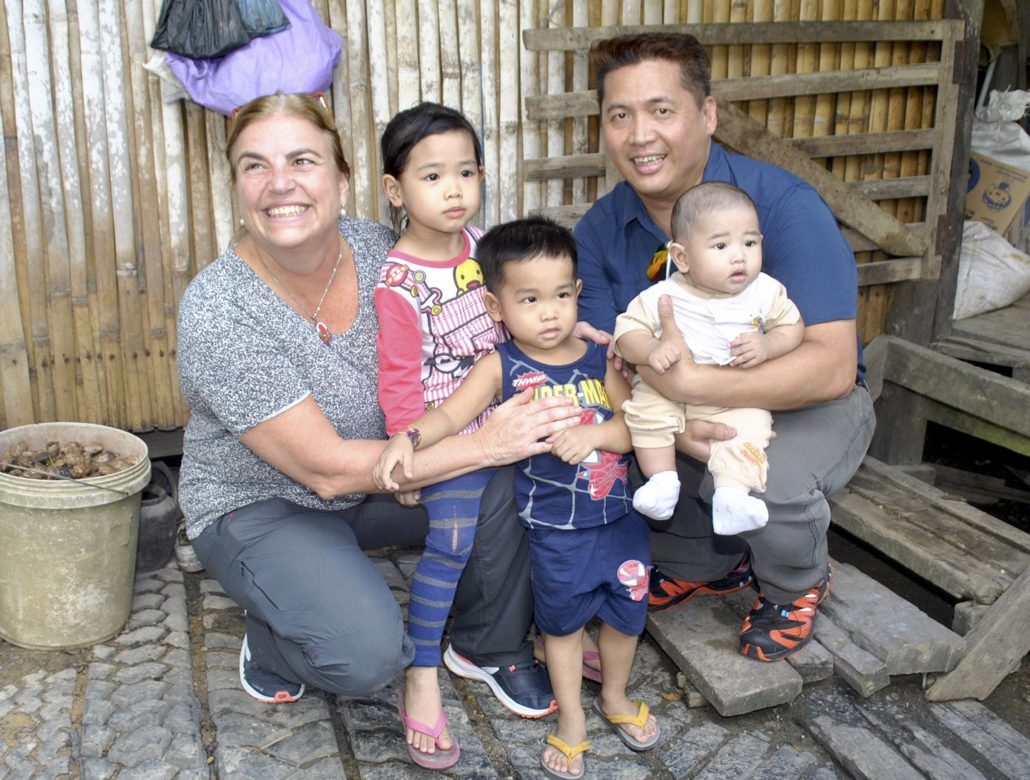
It has been a very exciting time for us in Pulau Tiga, many years in the waiting and it came in the most tiny form and underwater. The discovery of a species of nudibranch that was noted only to be found in Japan and Bali was recently discovered in Pulau Tiga. The nudi is called “Shaun the Sheep” – Costasiella Kuroshimae. The first known discovery of this nudibranch was made off the Kuro Island, in the Yaeyama Islands, of Japan.
The discovery, all thanks to a professional dive instructor Rudy Matt, of Try Scuba Sdn Bhd (https://www.facebook.com/tsiscuba.diving) who has many years teaching scuba diving and underwater photography.
Here in this picture, there are 7 of them on the same spot:
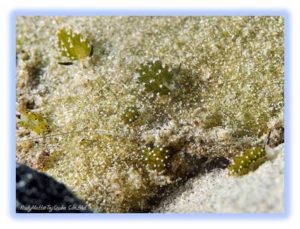 |
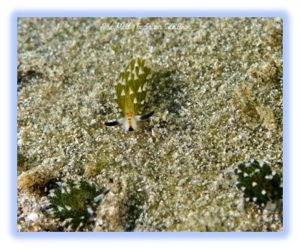 |
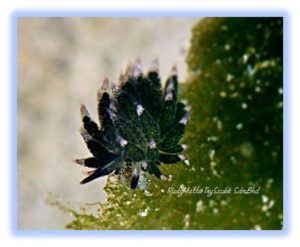 |
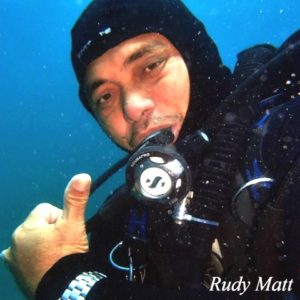 |
Kaamatan or Pesta Kaamatan is a form of harvest festival celebrated annually in the state of Sabah and Sarawak in Malaysia. It is normally celebrated by the ethnic Kadazan-Dusuns, as well as by other related ethnic groups in the state, and lasts for the whole of the month of May, ending with a public holiday on the 30–31 May.